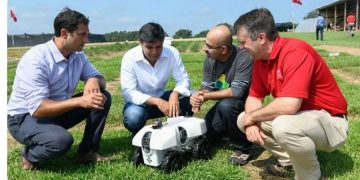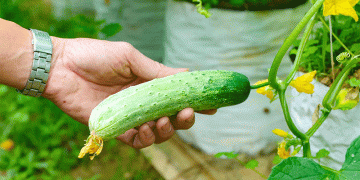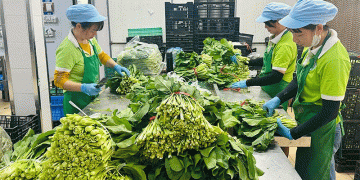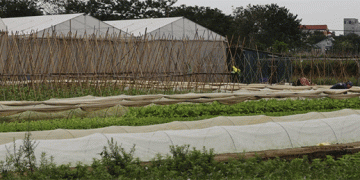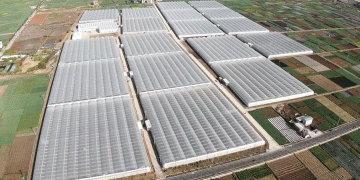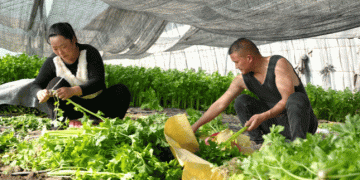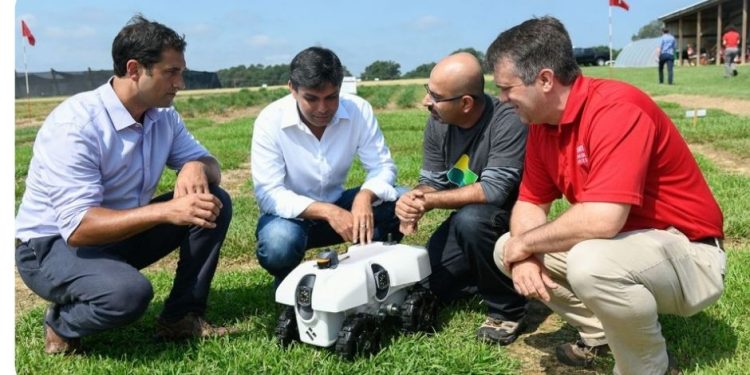The U.S. Department of Agriculture has awarded a five-year, $10 million grant to North Carolina State University and USDA-Agricultural Research Service to lead a nationwide research effort to improve the sustainability of agriculture, while tackling the grand global challenge of how to feed the world’s growing population, through the use of cover crops.
“With this grant, we will build off of our existing network of researchers to conduct coordinated experiments exploring all of the ways cover crops can improve the soil and profitability of cash crops and then turn that new knowledge into decision-support tools, or apps, for farmers,” said Chris Reberg-Horton, a professor in Crop and Soil Science and co-leader of the research team. “Ultimately, we want to increase food production, reduce the environmental impacts of agriculture and help farmers adapt to the changing climate.”
The grant from the Agriculture and Food Research Initiative’s new Sustainable Agricultural Systems program will explore how cover crops grown on farms and research stations in 23 states impact insects, weeds, water use, soil nutrient levels and ultimately the yield of major cash crops such as corn, cotton and soybeans. The project is co-led by Steven Mirsky, an agro-ecologist with USDA-Agricultural Research Service.
Cover crops are plants grown to protect soil from erosion while also improving soil nutrient levels use and reducing pests. Cover crops commonly grown in the off-season include rye, clover, winter peas and radishes.
The existing and extensive research network, called Precision Sustainable Agriculture, will expand in order to collect more types of data from more locations, with different soil types and diverse climates, said Reberg-Horton, who is also an assistant director of the Center for Environmental Farming Systems.
The interdisciplinary team that includes crop experts, computer modelers and social scientists from 36 institutions, will research questions ranging from how cover crops impact herbicide resistance to how the lushness of the cover crop in different parts of the field impacts soil nitrogen levels.
The team will use cutting-edge technology, such as autonomous data collection, cloud-based data platforms and machine learning to expedite their discovery process. For example, Edgar Lobaton, an associate professor in NC State’s Department of Electrical and Computer Engineering, will use his expertise in machine learning and signal processing to analyze the data collected and develop algorithms to predict the drought tolerance and resilience of crops. Other CALS faculty, including Ramon Leon and Alex Woodley, will study how cover crops incorporate nitrogen into the soil and impact weed levels.https://www.youtube.com/embed/m7S_VEhOFjE?feature=oembed&enablejsapi=1&origin=https%3A%2F%2Fcals.ncsu.edu
In addition to advancing scientific understanding of the complex factors surrounding the benefits of cover crops, the team will extend that knowledge into apps to aid farmers in their decision-making processes, Reberg-Horton said. Cover crops aren’t a one-size-fits-all solution, he added. Depending on the local soil type, climate and predominant pests, the app might recommend different cover crops and different management options.
The team will also develop courses for extension outreach and classroom education to further the spread of the knowledge they discover.
The goal of the grant is to increase the adoption of cover crops and transform agriculture into a more adaptable and sustainable system. In an earlier study, the team found that cover crops increased resiliency in an unexpected manner. In addition to reducing run off – which increases the amount of moisture retained by the fields and decreases the amount of nutrients that end up in rivers downstream – cover crops, particularly the root balls, made it possible for farmers to plant earlier during unusually wet springs, he said. Conversely by reducing run off, cover crops can also increase the drought tolerance of cash crops in many cases.
Reberg-Horton also hopes to establish a vast research network that will live on long past the five-year grant and help to shape a culture of large collaborations in agricultural research.
“Today individual farmers are making management decisions such as whether to grow cover crops, what types to plant and when to kill them,” Reberg-Horton said. “By collecting data across our vast network about what decisions they make and how that impacts cash crop yields, we can learn faster together.”
Chris Reberg-Horton, right, Girish Chowdhary, Ranveer Chandra, and Steven Mirsky, left, examine an autonomous agricultural data collection robot. Reberg-Horton and Mirsky are co-leaders of a $10M grant from the U.S. Department of Agriculture to transform agriculture. Photo: North Carolina State University
